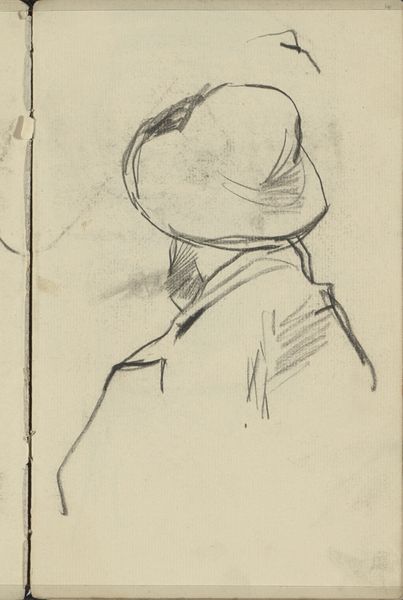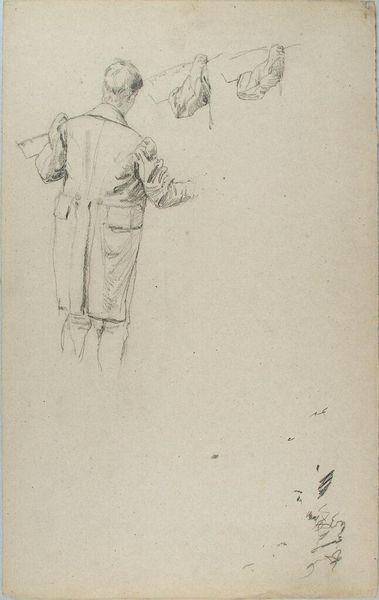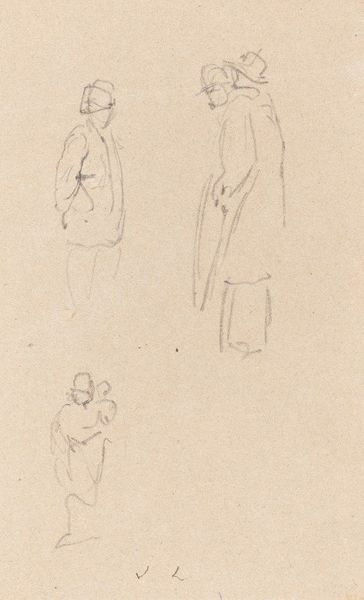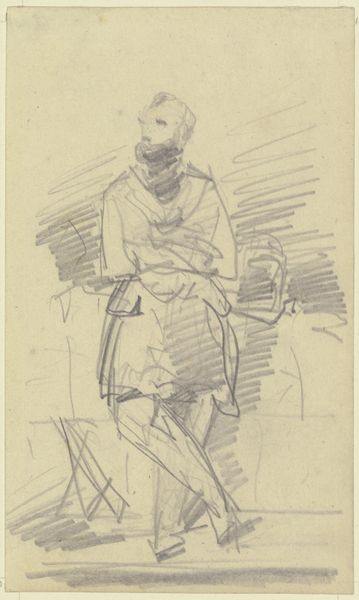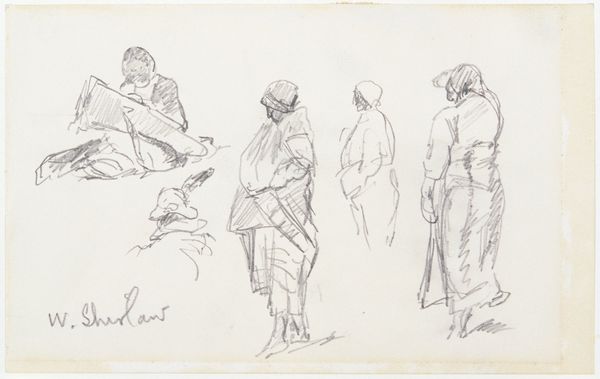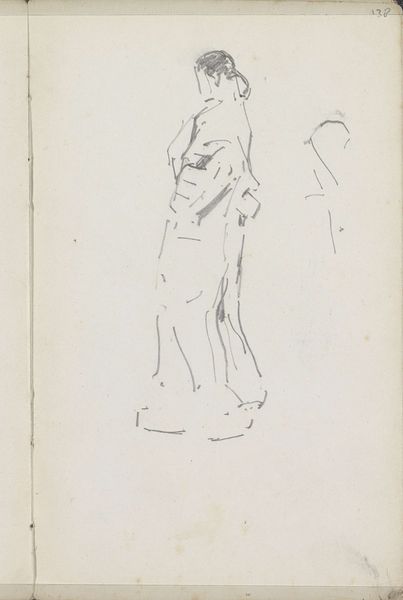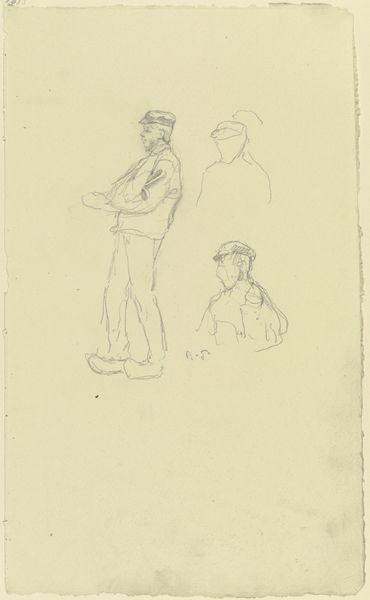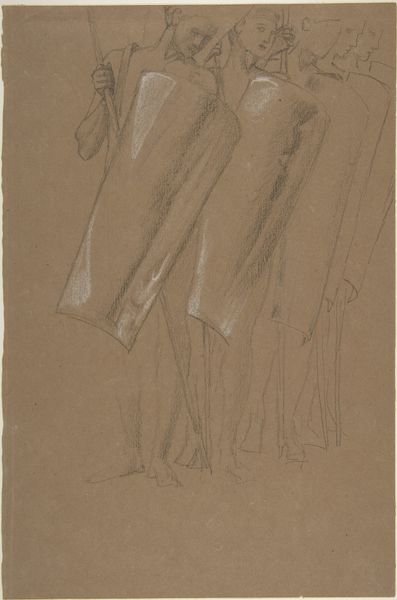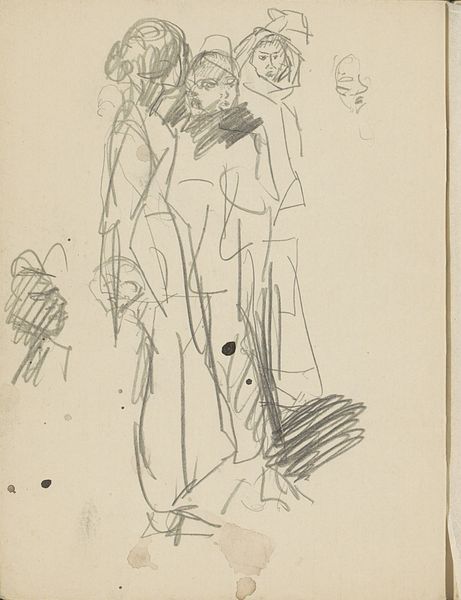
drawing, pencil
#
portrait
#
drawing
#
imaginative character sketch
#
figuration
#
personal sketchbook
#
idea generation sketch
#
sketchwork
#
character sketch
#
ink drawing experimentation
#
pen-ink sketch
#
pencil
#
sketchbook drawing
#
storyboard and sketchbook work
#
modernism
#
initial sketch
Copyright: Rijks Museum: Open Domain
Curator: The Isaac Israels drawing, “Studies van een leunende man” from around 1921-1922, is quite striking. Editor: Yes, it’s a very simple pencil sketch, or rather, a series of sketches on paper. I’m really drawn to the relaxed pose of the figure and the artist's minimalist approach, there is an undeniable aura of peace surrounding him. What do you make of it? Curator: What I find fascinating here is how this seemingly simple drawing can open up discussions about labor and leisure in the early 20th century. Look at the subject – how would you describe his dress and posture? Editor: He seems to be wearing casual clothing with a hat. It makes him seem like an everyday person, he also is leaning back on something. Curator: Exactly. Israels often depicted working-class individuals. By portraying them in moments of rest, he subtly challenged the dominant narratives that often erased or romanticized their existence. The sketch compels us to consider labor conditions. Who gets to rest? Who is forced to toil relentlessly? What kind of person is he? Editor: That's an interesting point, I didn't immediately connect the figure's casual stance with questions of social class, but it makes total sense considering Israels' interests. The figure almost embodies the silent majority, leaning back. Curator: Precisely! This piece invites us to explore the silent dialogues, the unheard stories embedded within seemingly ordinary lives. We must be aware of the person he is; a new individual that breaks the classical view. Editor: I now see how Israels prompts questions regarding gender, race and social norms in this work, thank you. Curator: Indeed. The sketch is a reminder that even seemingly simple images can hold layers of meaning, sparking essential dialogues about the social fabric around us.
Comments
No comments
Be the first to comment and join the conversation on the ultimate creative platform.
